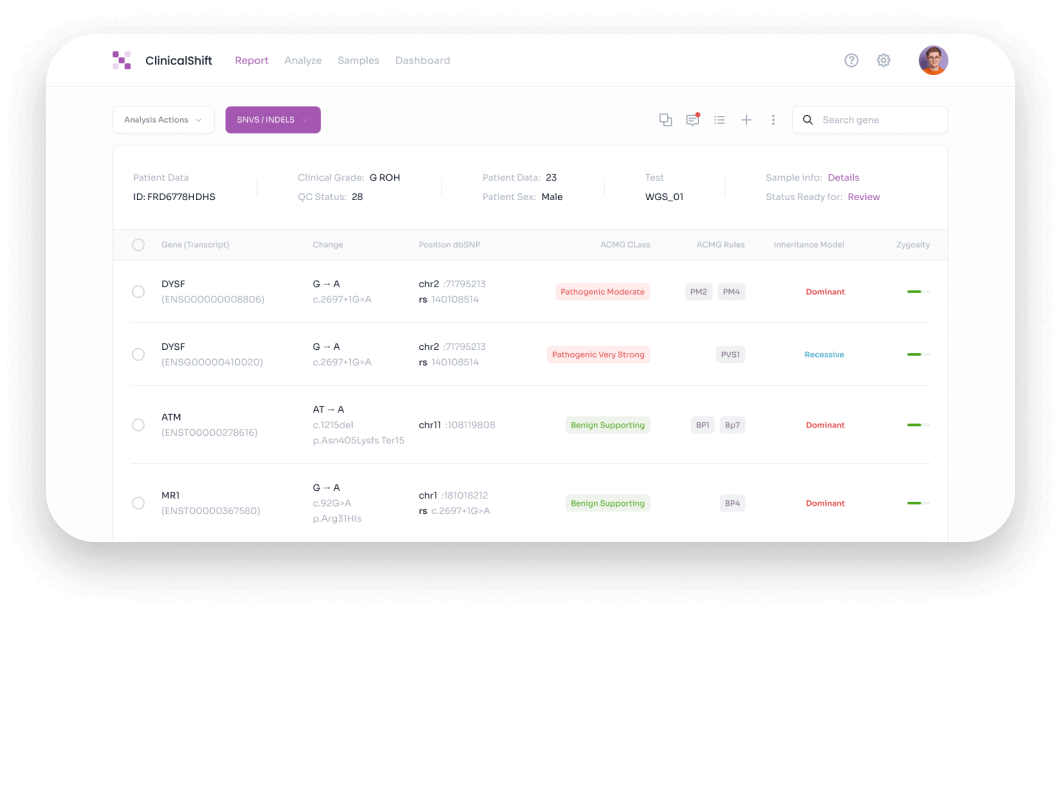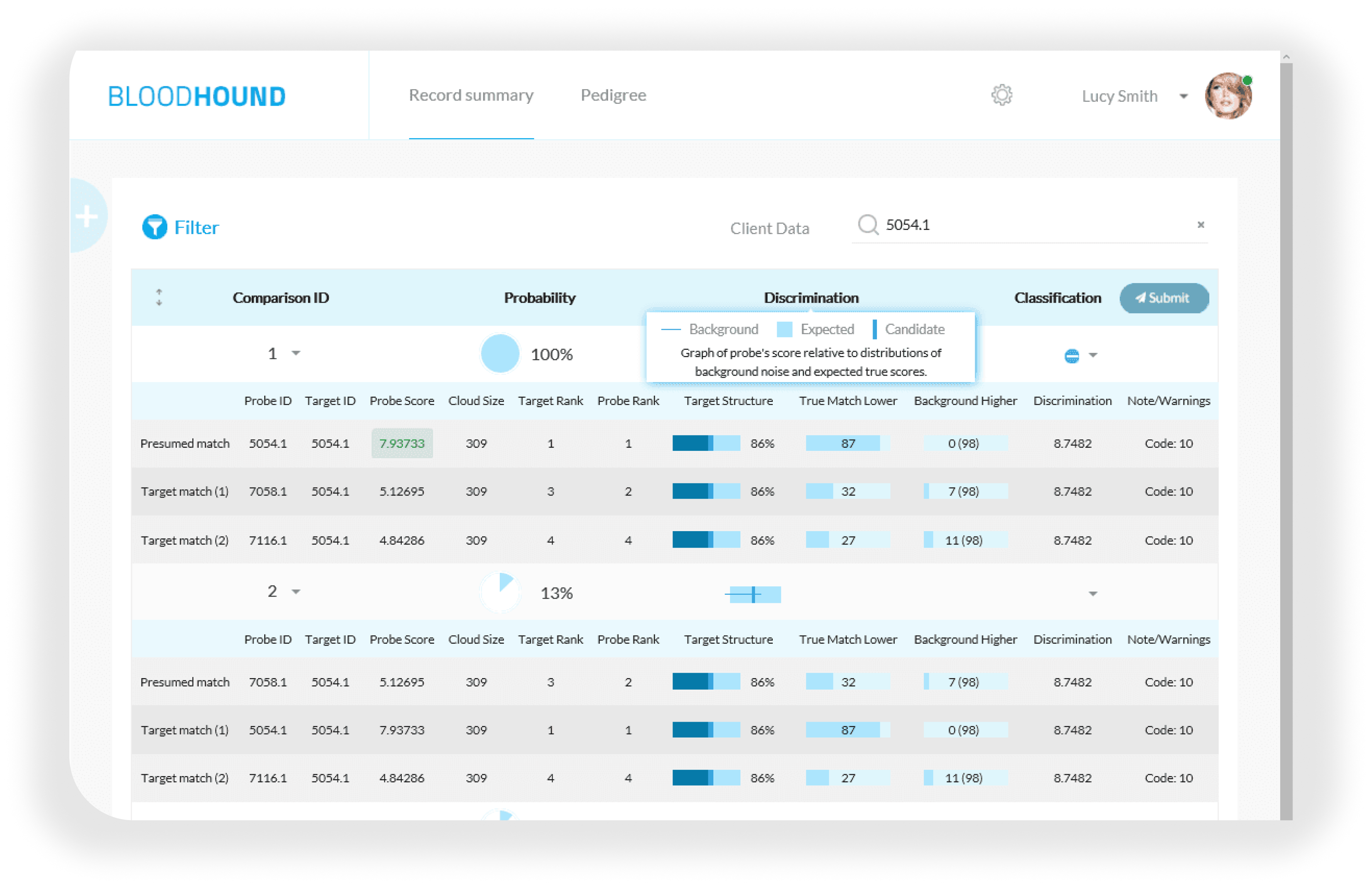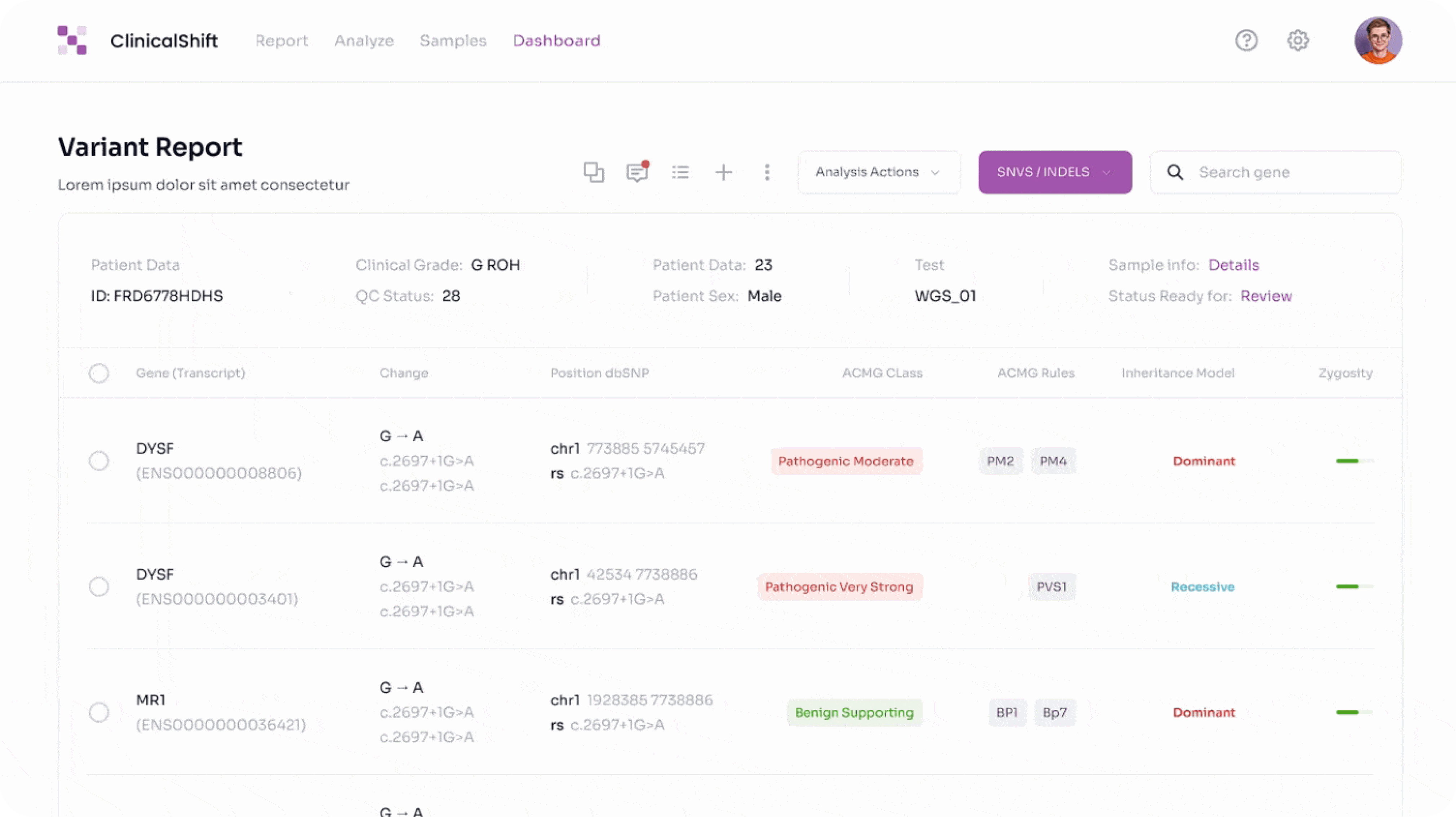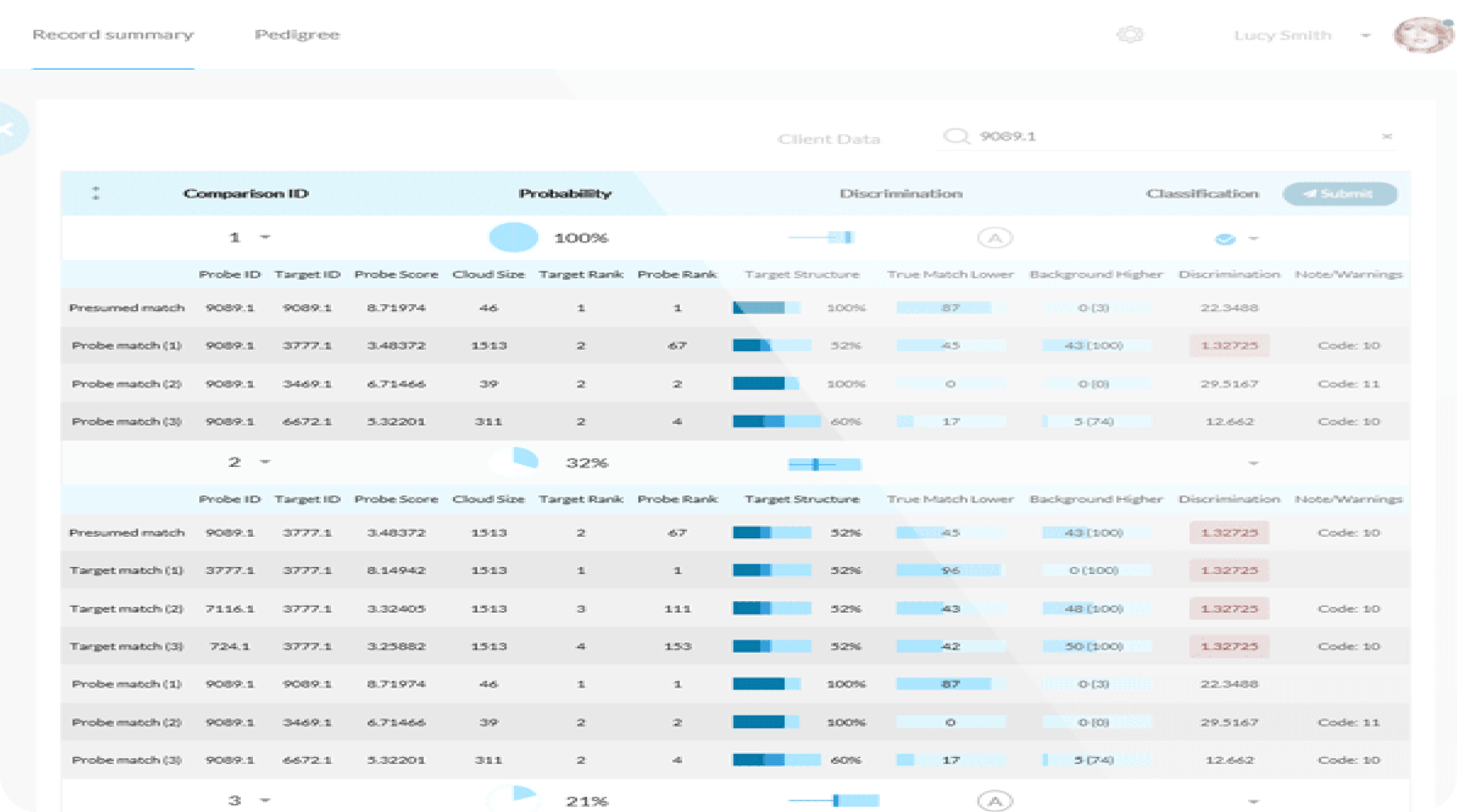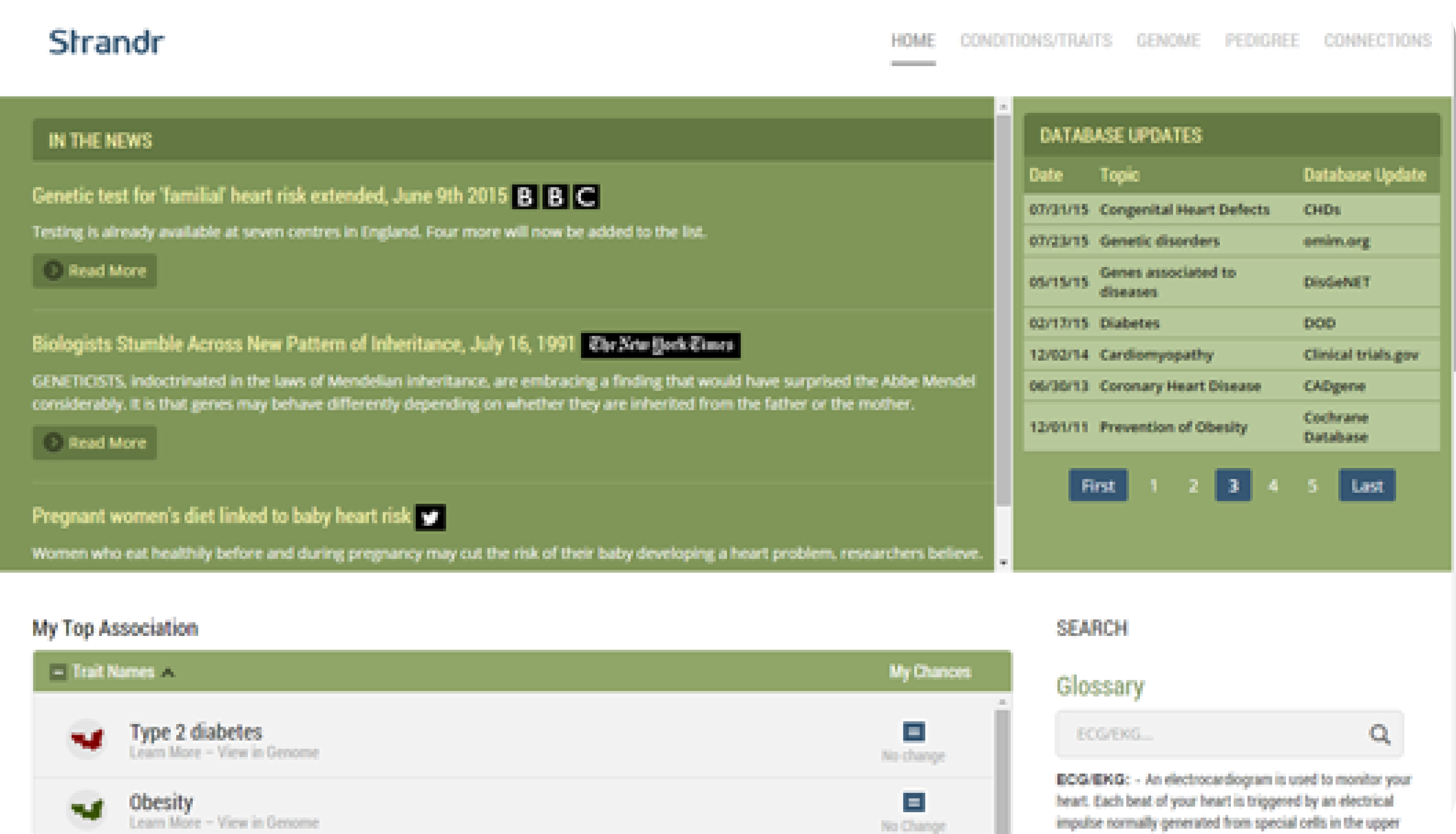

Clinical Shift
Genomic Analysis is the Cornerstone of Personalized Medicine
The genetic code holds the key to achieving authentic personalized medical care. Achieving an in-depth understanding of the complex interactions between our genome, the environment, and lifestyle factors will allow clinicians to provide medical services which are more effectively targeted toward health promotion and preventive management of hereditary diseases.
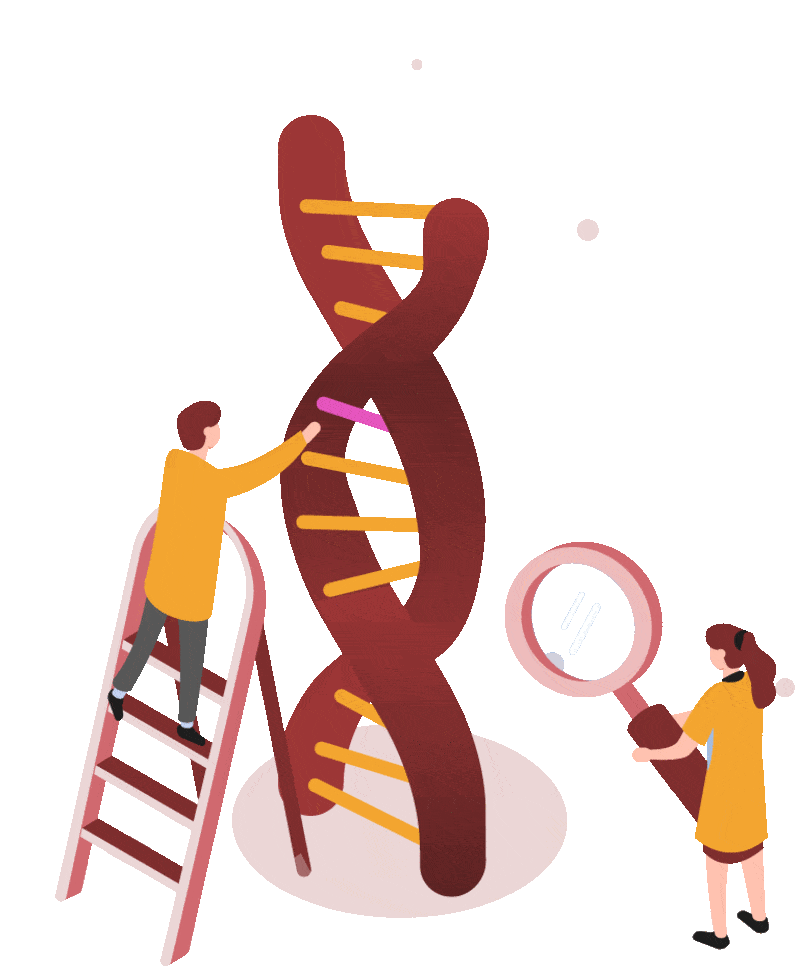
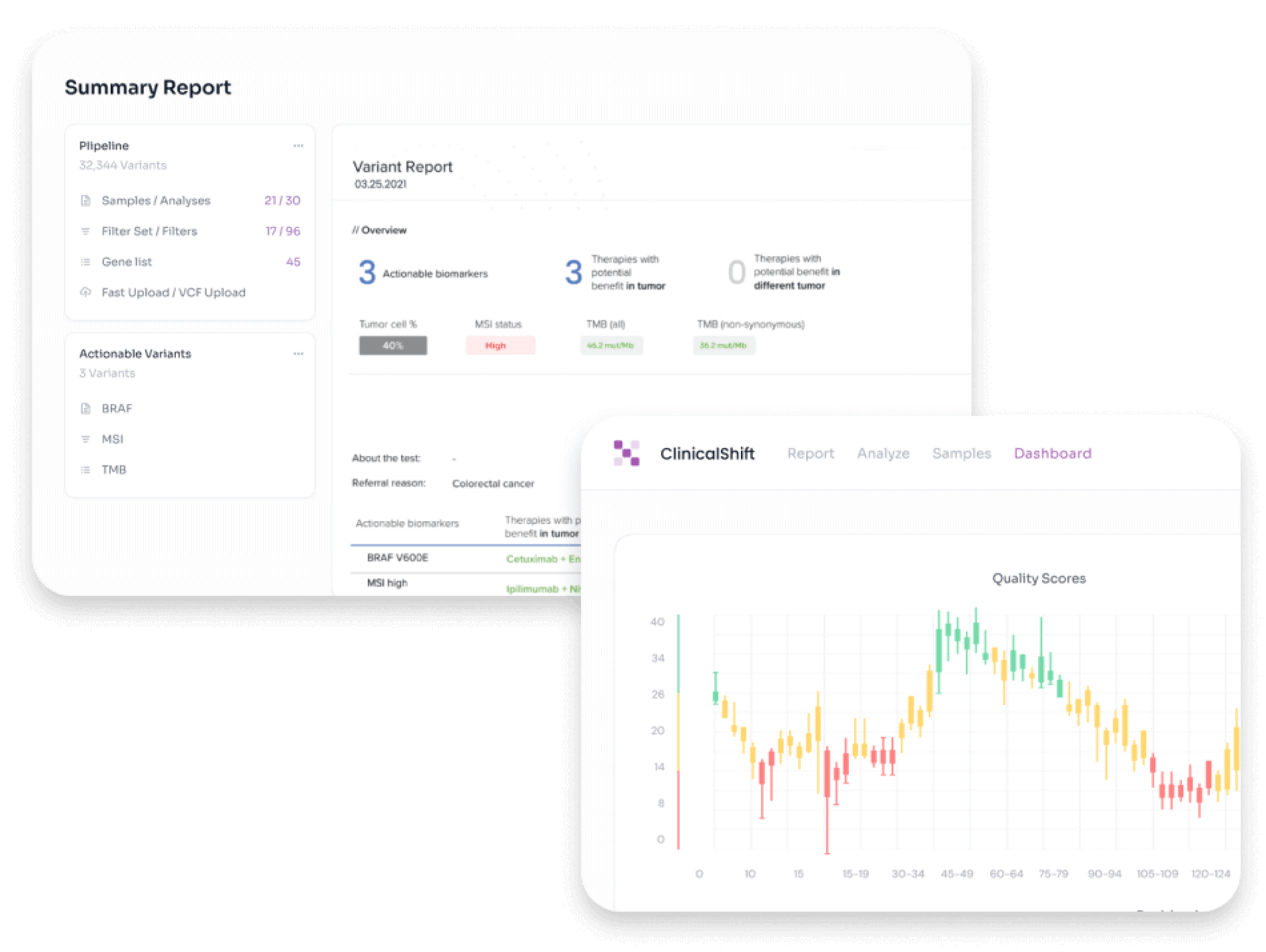
Conditions such as Alzheimer’s disease, ischemic heart disease, diabetes mellitus, and cancer all have a strong hereditary component and are among the top causes of morbidity and mortality all over the world. The application of Next-Generation Sequencing technology provides timely, concise, and accurate genetic analyses of variants. Coupled with our innovative AI models, this data is presented as clinically-oriented, intervention-focused, and data-driven information that aids clinicians in critical decision-making.

Strandr
The Power to Analyze Your Genome is Coming
Strandr gives you the power to explore your Genome, to show its interaction within your family, and to understand your personal health profile, with or without the input of your physician.
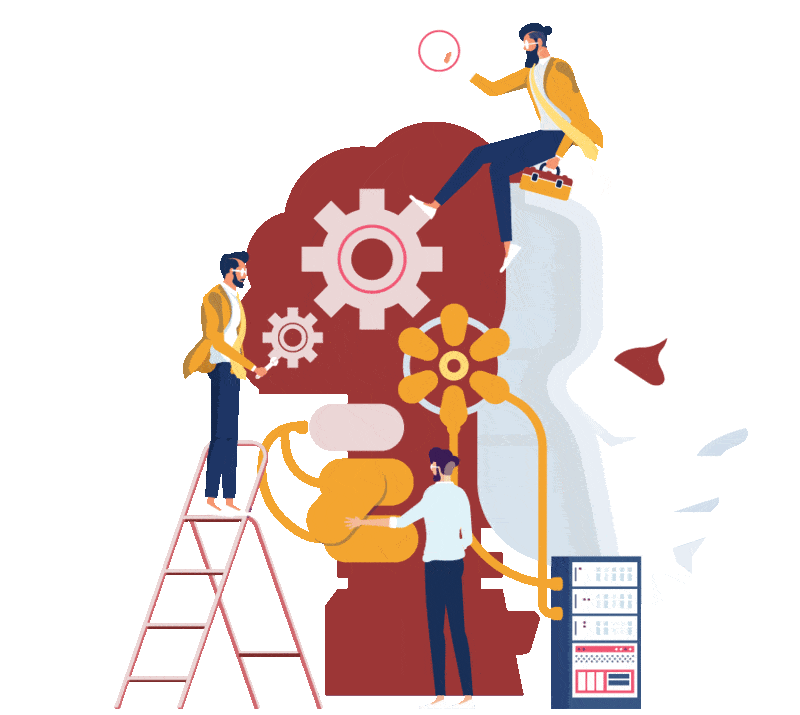
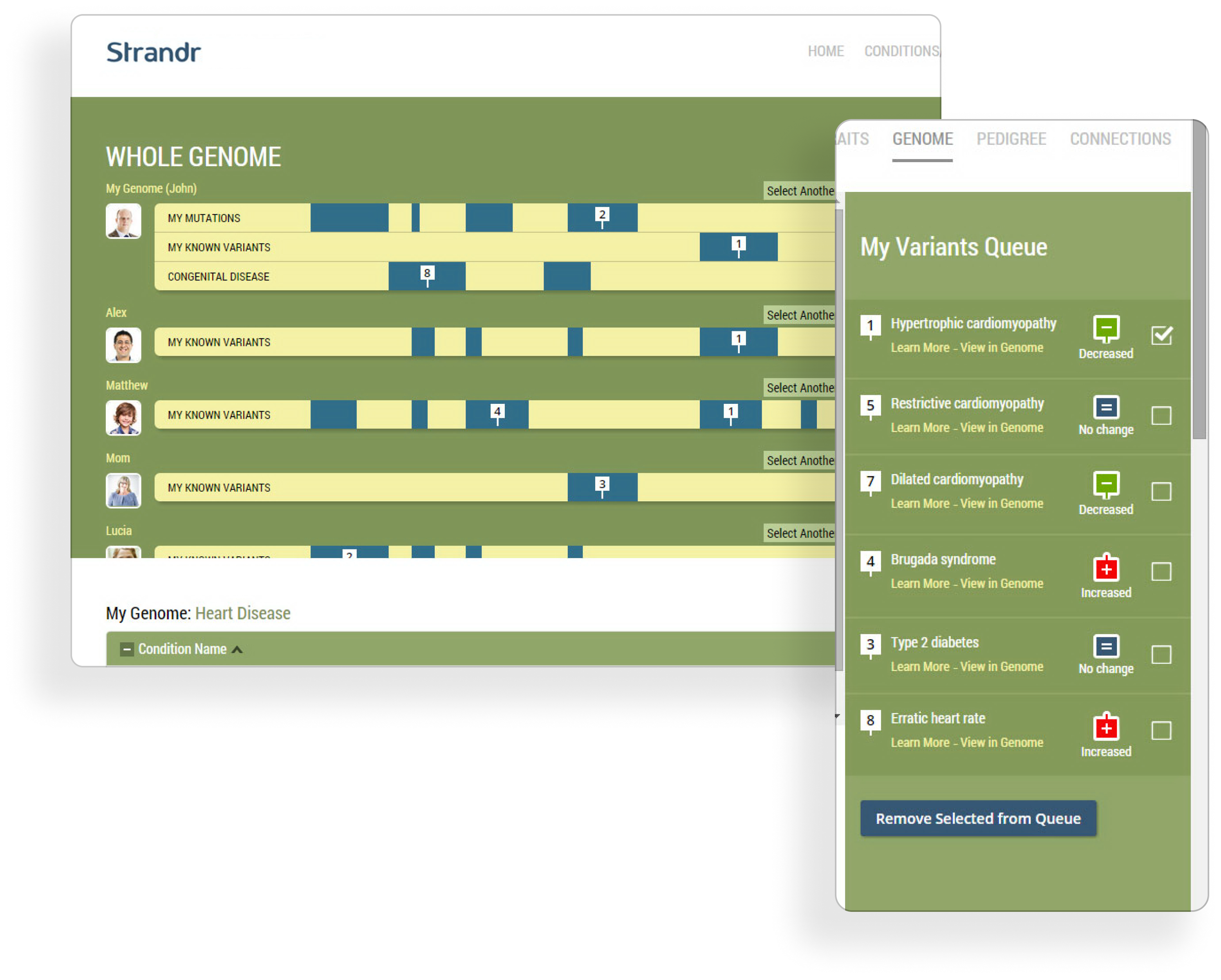
The cost of sequencing your genome (the DNA that makes up your physical characteristics and which may impact your health) is coming down dramatically. Today your genome can be in your hands for roughly $1000, and the expectation is that it will soon cost no more than a blood test. Still, the data is not useful to you or even your physician, without sophisticated analysis tools previously available to only the most highly trained scientists. Strandr is changing that now.

Bloodhound 2.0
BloodHound 2.0
is Out Now!
Bloodhound 2.0, the first and only commercial kinship analysis tool capable of operating with no human intervention. Whether you leave it entirely up to artificial intelligence or choose to have an analyst review and confirm the matches, Bloodhound 2.0 delivers unmatched precision and confidence assessments across the spectrum of pedigrees, no matter how much genetic information is available.
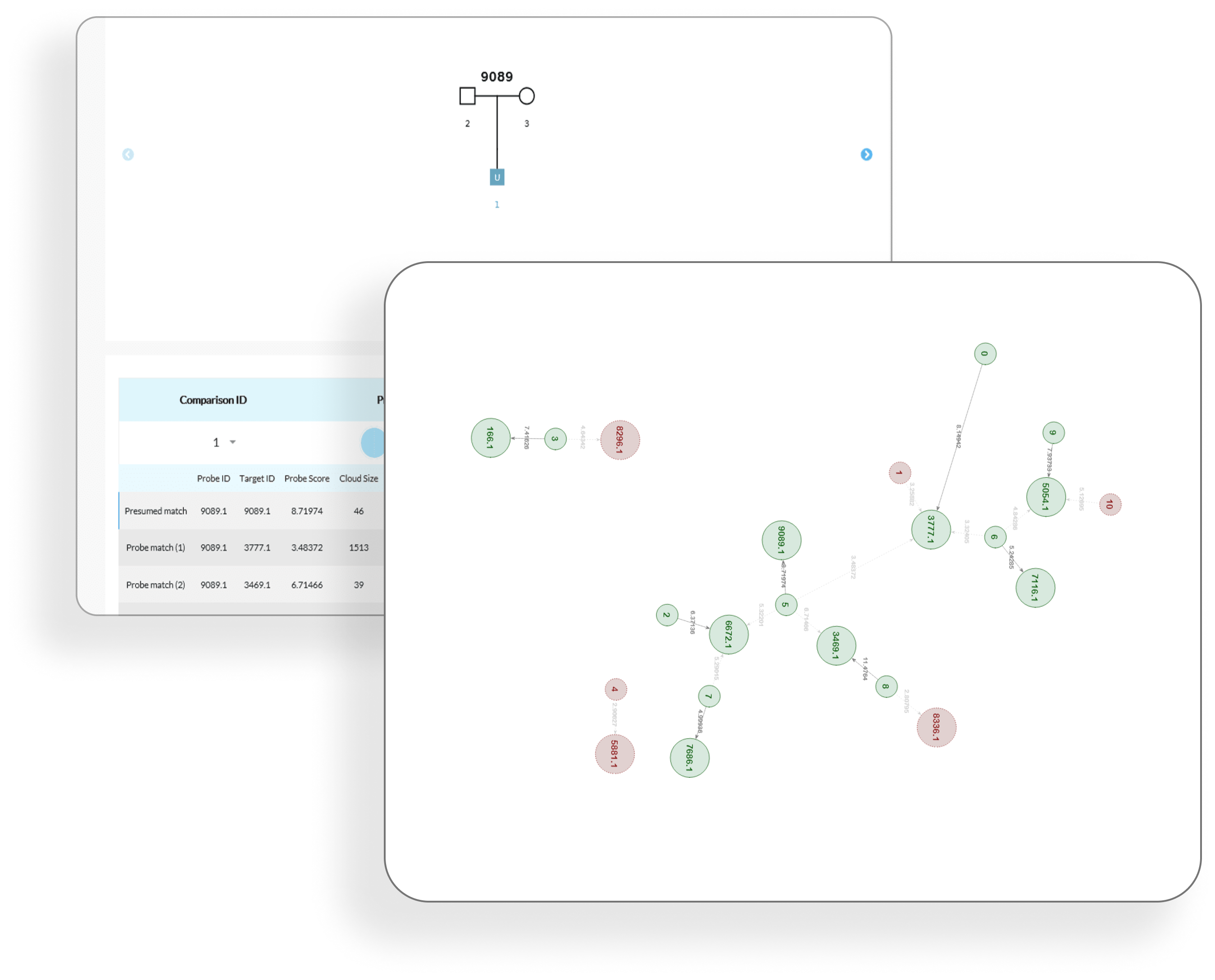

Our technologies
Computing System
Optimization
and Cybersecurity

One of the most important steps in NGS is the
data alignment phase. Here we make use of our
innovative machine-learning algorithm to map the
processed genetic data against an
industry-standard reference genome. Our AI does
this through several thoroughly tested alignment
tools We also make use of machine learning
algorithms to identify and prioritize genetic
variants, a process known as variant calling.
This requires a high performance computing
system to identify subtle changes such as single
nucleotide polymorphisms, insertions, and
deletions from the large data set
After this comes the last stage in genomic data
analysis, data interpretation. Here [insert
company name] makes use of high-performance
visualization and agnostic analysis tools to
view all the data at once, pick out variants and
interpret this information in a clinically
relevant manner. This information can now be
used by a physician or researcher to form a
detailed risk assessment for hereditary diseases
and other genetic conditions

Contact us

